In recent weeks, the beauty industry has faced a significant challenge as the U.S. government implemented steep tariffs on imports from China, particularly affecting packaging materials. With tariffs soaring as high as 125%, brands are bracing for a surge in production costs at a time when consumer spending is already on shaky ground. This economic environment raises concerns about the implications for smaller beauty brands, which may struggle more than larger counterparts to absorb these new expenses without passing them on to consumers. Industry experts suggest that these tariffs could not only lead to increased retail prices but also slow down market activity as brands reconsider their supply chain strategies.
Denis Maurin, president of sales and innovation at HCT, highlights the profound impact of these tariffs. He points out that the highest tariffs will hit the empty packaging imported from China, a critical component of many beauty brands’ operations. This dynamic could necessitate price hikes across the board, potentially discouraging consumers from making purchases. Maurin warns that brands might choose to pause their order placements to await clarity on tariff negotiations. The uncertainty surrounding the situation could create a ripple effect, deeply affecting the number of new product launches and reorder volumes in the beauty sector.
Taking a broader view, David Chung, founder and CEO of hair brand The Rootist, echoes Maurin’s sentiments by sharing firsthand experiences of the soaring costs his brand faces. With tariffs skyrocketing to around 140% on some materials, Chung anticipates raising retail prices shortly. He highlights a concerning reality for many brands: while cheaper options from China are now heavily taxed, U.S.-made alternatives are scarce and are often four times more expensive. This dilemma poses a significant threat to maintaining affordability for consumers while managing profit margins in an increasingly competitive industry.
Foreo, a global beauty brand with its manufacturing in China, also plans substantial price increases of 20% to 30%, citing escalating duties on imports. As they navigate these financial hurdles, Foreo’s global commercial director, Mario Gomez, underscores the importance of transparency with consumers regarding price adjustments. Despite this price shift, the company aims to keep its mission intact: to promote self-care that is accessible and effective for everyone, all while grappling with one of the most aggressive tariff environments seen in years.
Historically, the beauty packaging industry has contended with similar challenges; notably, past tariffs imposed during President Trump’s term have already reshaped the landscape for many brands. In contrast to smaller brands, industry giants like Beiersdorf and L’Oréal stand in a more favorable position due to their diversified supply chains and local manufacturing capabilities. This strategic advantage means that they are less affected by sudden price surges and can absorb costs without dramatically impacting their retail pricing. Analysts note that brands with a substantial portion of products manufactured domestically are better equipped to manage the pressures associated with these new tariffs.
As the situation unfolds, analysts predict that the impact of rising prices will be felt more acutely in the mass market than within the luxury segment. Companies like e.l.f. Beauty, heavily reliant on Chinese imports, may face greater challenges in navigating their pricing strategies without losing customers. The beauty industry, known for high marketing expenditures relative to sales, may also see a shift in focus as brands look to preserve margins by reducing marketing budgets or reevaluating their product offerings. While the larger corporations may weather this economic storm more effectively, smaller brands will likely need to adopt creative solutions to avoid being swept away by the rising tide of tariffs.

